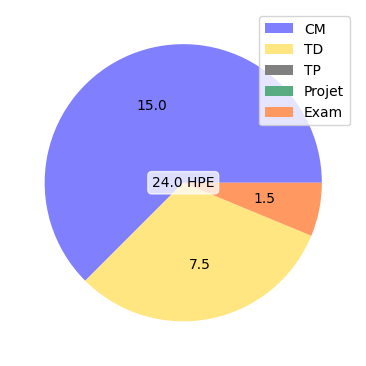Physique Quantique 2
Quantum Physics 2
Description: The Quantum Physics 2 course, offered in the first-year common core curriculum, builds on Quantum Physics 1 by introducing advanced concepts of quantum mechanics while reinforcing the previously acquired formalism. The course begins with the study of symmetries in quantum mechanics and their connection to conservation laws, providing a structured framework for analyzing quantum systems. It then introduces both time-independent and time-dependent perturbation methods, which are essential for tackling systems that cannot be solved exactly, with applications such as energy level corrections and field-induced transitions. The composition of angular momenta is then addressed, particularly spin addition, along with an introduction to Clebsch-Gordan coefficients—crucial for understanding atomic fine structure and spin-orbit coupling. Finally, the course covers indistinguishable particles, focusing on fermions, with the introduction of antisymmetric wavefunctions, the Pauli exclusion principle, and multi-electron atoms, laying the groundwork for understanding electronic structure. This course equips students with the tools needed to analyze complex quantum systems and prepares them for advanced topics in atomic physics, condensed matter, and quantum engineering.
Bibliography:
- Ref. [1] : C. Cohen-Tannoudji, F. Laloë, B.Diu, Mecanique Quantique – Tome 1, EDP Science CNRS Edition (2018)
- Ref. [2] : J.-L. Basdevant, J. Dalibard, Mécanique Quantique, Ellipse Edition (2006)
- Ref. [3] : M. Joffre, Physique Quantique Avancée. Cours de lEcole Polytechnique (2023)
Learning outcomes: At the end of this course, students will be able to: AA1: Identify situations where time-independent and time-dependent perturbation theory applies, and use it to construct approximate solutions – AA2: Apply the theory of angular momentum composition and understand atomic fine structure – AA3: Master the formalism associated with symmetries in quantum mechanics – AA4: Use the formalism of indistinguishable particles to analyze the structure of atoms with multiple electronic layers
Evaluation methods: 1h30 written test, can be retaken.
Evaluated skills:
- Physical Modeling
Course supervisor: Nicolas Javahiraly
Geode ID: SPM-PHY-011
